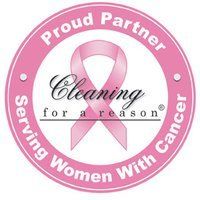How to Get Rid of Black Mold – The Right Way
Black mold is a dangerous, and pesky, hazard to have in your home. Fortunately, there are many alternatives for getting rid of black mold. The challenge? Keeping it away. Weeks after it’s treated, black mold seems to reappear in the bathroom. The danger of hosting black mold in your home is that it can cause various medical conditions that are harmful to the immune system.
There are various approaches to getting rid of black mold including vinegar, tea tree oil, and grape fruit. The following article from HubPages.com explains how to get rid of black mold, for good (without the use of harmful chemicals).
How to Get Rid of Black Mold- the Easy and Cheap Way
Getting Rid of Black Mold
What are those black patches in my bathroom? What is that "mildew" smell? It must be mold again! Black mold, if left untreated, can be a health hazard- potentially causing respiratory problems like asthma and allergies. Even worse, if you have a baby or elderly folks in the house, it can be detrimental to their immune system!
There are many chemicals in the market that can kill mold, but the idea of polluting your house with additional toxic fumes can end up giving you more goosebumps. Listed below are safer and more natural alternatives to get rid of black mold in the bathroom and carpet.
If you have a small infected area, you can clean it up yourself without the need of a professional. Save some money by looking in your kitchen cupboard for a few household items. Read on to learn about the three most effective mold-killing materials that are also an excellent substitute for an expensive service bill.
What is black mold?
Black mold is from growth of small organisms, particularly Strachybotrys Chartarun and Strachybotys Astra, which has been linked to many health problems. Black mold can cause several respiratory problems including bronchitis, asthma, and could be extremely dangerous to younger kids and babies.
Black mold can be found anywhere in your home, including ceiling tiles, water soaked wood, walls, floors, and carpet. Small leaks or plumbing problems usually lead to the growth of mold because they strive best in moist environments.
If your carpet has gotten wet and did not dry thoroughly, mold can spread in that damp area For example, flood or leakage from the rain can cause carpet to be damp for a prolonged period of time.
If you touch mold with a gloved hand, it would feel slimy. It appears black and spotty, but could also have a shade of greenish-yellow. Black mold will have a very distinct “mildew” smell. Sometimes the signs are not as evident. If you begin experiencing an allergic reaction or suddenly having respiratory problems, there’s a possibility of present of black mold.
Step-by Step Guide: How To Get Rid of Mold
Do not scrape dried mold as it can be released into the air.
Step 1: The first thing you should do is to find some eye goggles, a pair of latex or rubber gloves, and wear protective clothing that covers your whole body. Wear a filter dust mask to prevent inhalation.
Step 2: You need to contain the area that is affected. To do this, use duct tape and a plastic sheet to seal off vents or openings where there might have air flow coming in and out. You can also place a small fan in an open window to direct the mold spores outdoors.
Step 3: Take a stiff brush and clean the affected area with mild soap and water. Place the materials that have been affected in a Ziploc bag and seal it tightly.
Step 4: Apply a disinfectant (or one of the solutions listed below) on the affected area. Don’t forget to spray the surrounding area. This method will kill the remaining mold spores.
Step 5: Rinse the area with hot water. Let the area dry completely. If there’s excess water, you can use a wet/dry vacuum to remove it up. Vacuum thoroughly after it has completely dried up.
TEA TREE OIL -Most Effective!
Getting rid of black mold with tea tree oil is the most effective method! I've used it successfully on a small area of the rug and a moldy shower curtain. Tea tree oil is more expensive than vinegar, but a few teaspoons go a long way.
Tea tree oil is an essential oil that is safe for people and pets. It does have a distinct smell but don't worry, the smell will dissipate. Since it has anti-fungal and anti-bacterial properties, aside from killing all types of mold, tea tree oil can be effective in treating lice, dandruff, athlete's foot and many other conditions. It is a good idea to buy a small bottle and keep in your house. Remember, a small amount goes a long way.
TIP: Make sure you buy real tea tree oil, made from the Melaleuca Alternifolia.
To mix the solution:
- 1 teaspoon tea tree oil
- 1 cups water (1:1 ratio of oil to water)
Combine in a spray bottle, shake, and spray on affected areas. You don't need to rinse. If you have extra solution left, just save the remaining solution since it won't lose its potency.
VINEGAR- Cheapest Way
Vinegar is also a non-toxic and a safer alternative. According to a study by Heinz company, a 5% solution of vinegar kills 99% of bacteria, 82% mold, and 80% germs such as viruses.
Take a spray bottle and fill it with 5% vinegar. Keep it in your bathroom and kitchen for quick cleaning. Personally I don’t mind the smell of vinegar but it can be too strong and unpleasant for others. Just add a few drops of essential oil to white distilled vinegar and you will be able to tell the difference immediately.
Essential oil, such as lavender, will ease the strong smell of vinegar, leaving a slighter and more pleasant smell.
GRAPEFRUIT SEED EXTRACT
The advantage of using grapefruit seed extract instead of tea tree oil for killing mold is that it is odorless. It is also expensive and can be bought at most health food stores, or online stores such as Amazon. Grapefruit seed extract will also disinfect and deodorizes the area.
How to mix the solution:
- 20 drops grapefruit seed extract
- 2 cups water
Combine in a spray bottle, and spray on affected areas. Do not rinse. Like tea tree oil, it has a long shelf life and can be saved.
Other Mold Removal Products
There are other household products that you can use to remove mold. However, it should be your last alternative due to their toxic nature. Some solutions may even harm the surface that mold is growing on. Use these solution with caution and only as a last resort.
Bleach: Use a ratio of 1 cup of bleach to 1 gallon of water. Bleach cannot completely kill mold growing in porous materials. That means the chlorine in bleach can be left on the top of material, creating a more moisture surface for mold to grow back. Another disadvantage of using bleach is that it gives off corrosive chemical and can damage your rug. It may even strip off the color of your rug, while leaving behind toxic dangerous fumes.
Borax: Use a ratio of 1 cup Borax to 1 gallon water. Although Borax doesn't give off toxic fumes, it is less effective on carpet. It is recommended on even surfaces like tiles.
Ammonia: Mix a solution of 50% "clear" ammonia and 50% water. Do notmix with bleach, as this will create a really toxic, dangerous fume. After spraying the solution on affected area, leave it for 2-3 hours before wiping and rinsing it off.
Hydrogen Peroxide: Pour 3% concentration hydrogen peroxide into a spray bottle. Leave it on affected area for 10 minutes. Although hydrogen peroxide is a safer alternative than bleach, it is a bleaching agent, which may cause fade in the material.
Black Mold Health Effects
According to the Center of Disease Control (CDC) this type of mold is responsible for mold allergies and over 100 cases of lung disorders. There are many species of organisms, and not all of them are toxic. Why would you take the risk of getting mold allergies? Thus it is extremely important to treat and remove molds regardless of types of mold found. Your family’s health depends on it.
Mold can easily be transported to different areas in your house by just attaching to your shoes or pets. They thrive and grow best in damp and moist environments.
People who have allergies, respiratory disease, or any type of immune suppressing disease should be especially wary of this toxic mold.
Symptoms of Black Mold
Minor symptoms include:
Headaches, dizziness, red eyes, rashes and hives, asthma, lethargy, allergic reaction, wheezing.
Major symptoms to look for:
Memory loss, irregular blood pressure, damaged digestion, damaged respiratory, infertility.
Prolonged exposure to black mold can lead to serious health problems. You should contact your doctor immediately and get rid of the mold!
Black mold can hide in mysterious places! If you are experiencing symptoms of black mold, take a closer look at the wall, ceiling, or floor in your bathroom. When tackling black mold, it’s best to clean it with natural solutions such as vinegar, grape fruit, or tea tree oil. Tea Tree oil is one of the most effective ways to tackle black mold at its start. It is important to purchase a high quality brand of tea tree oil for premium results. Even a little bit can conquer black mold.
When cleaning black mold, remember to wear gloves and goggles. Black mold is serious business, not to mention it is extremely harmful to your health. Even when cleaning black mold, it’s important to avoid scraping it off, to ventilate the area, and to throw away materials used to rid the black mold. The Maids know how to handle black mold head on! We’d be more than happy to handle the hassle of black mold for you. If you have any questions about black mold or other clean ups, feel free to contact The Maids.



